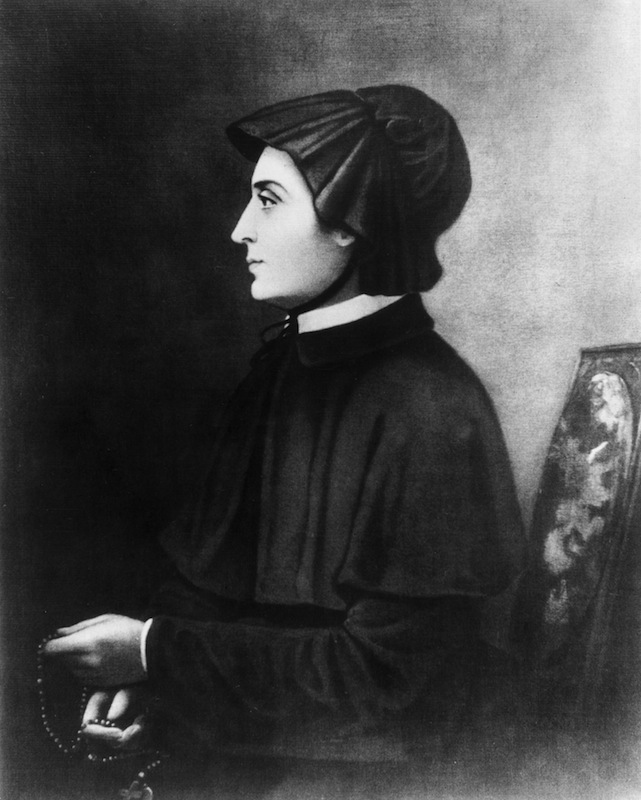
Despite being home to the world’s fourth-largest Catholic population, the U.S. hasn’t produced a representative number of saints. In 1963, when New York-born Elizabeth Ann Seton was beatified, TIME lamented that Italy had 40,000 native-born saints recognized by the Roman Catholic Church — while the U.S. still had none at all.
When Seton, née Bayley, was formally canonized on this day, Sept. 14, forty years ago, she became America’s first native-born saint. She was not, however, raised Catholic. Born in 1774 to wealthy parents and related to some of the most prominent American pioneers, including the Roosevelts and the Van Cortlandts, she was, like much of America’s upper-class elite, Episcopalian. Her position as a privileged socialite made it even less likely that she’d become the nation’s first Catholic saint.
“Betty Bayley was a gay, open girl who loved dances and parties,” TIME observed. Her wedding, to the heir of a mercantile fortune, was “the biggest social event of the 1794 season.”
But her husband’s fortunes reversed, and then his health failed. When he died in 1803, Betty was left a penniless widow with five children. And when she converted to Catholicism in 1805, whatever high-society doors had remained open to her instantly shut in her face.
So she moved to Maryland, where she formed a religious community that grew into the country’s largest religious order for women — and founded America’s first Catholic parochial school. Gay Betty Bayley, TIME writes, transformed into “[b]usy, bird-like Mother Seton.”
Sainthood, of course, required her to keep busy beyond the grave (she died of tuberculosis in 1821), and she made the cut only after the Vatican confirmed her intercession in three miracles: curing a nun of pancreatic cancer, a young girl of leukemia, and a construction worker of “a complicated viral affliction of the brain,” per TIME. Normally one more miracle is required for canonization, but Pope Paul VI showed her the compassion her New York friends had not, and let the last one slide.
Still, Seton remains one of only three U.S.-born saints. Katharine Drexel, another socialite-turned-saint, lived from 1858 to 1955 and was canonized in 2000. The Philadelphia banking heiress, sometimes called “the millionaire nun,” funneled her considerable fortune into missions that targeted black and Native American communities.
America’s most recent saint, Kateri Tekakwitha (canonized in 2012), followed a strikingly different path to sainthood. Born in 1656 in what is now upstate New York, Tekakwitha was the daughter of a Mohawk chief who converted to Christianity and “clung to her faith resolutely, despite tribal torments, until her death in 1680,” according to TIME. Her torments were not exclusively religious in origin, however. Smallpox wiped out the rest of the family when she was only four; the disease left her badly scarred and visually impaired. The name Tekakwitha, given to her by her tribe, means “she who bumps into things.” Catholics call her by a more elegant nickname: “Lily of the Mohawks.”
Read original 1975 coverage of Seton’s sainthood proclamation, here in the TIME archives: A Saint for America
More Must-Reads from TIME
- Why Trump’s Message Worked on Latino Men
- What Trump’s Win Could Mean for Housing
- The 100 Must-Read Books of 2024
- Sleep Doctors Share the 1 Tip That’s Changed Their Lives
- Column: Let’s Bring Back Romance
- What It’s Like to Have Long COVID As a Kid
- FX’s Say Nothing Is the Must-Watch Political Thriller of 2024
- Merle Bombardieri Is Helping People Make the Baby Decision
Contact us at letters@time.com